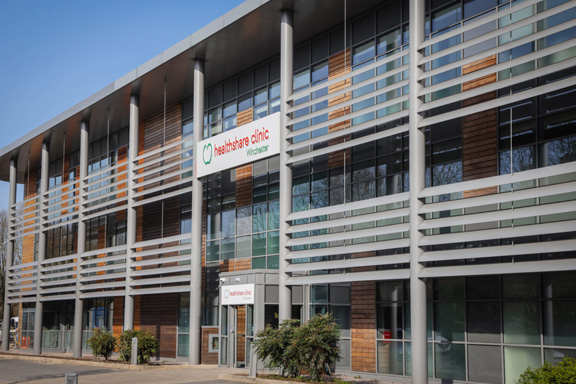Diabetes & the Eye
There are two types of diabetes.
Type 1 where your body is unable to produce insulin. This is normally evident at a young age, before your 30's. Individuals with type 1 diabetes are usually reliant on insulin injections.
Type 2 often develops later in life and is where you don't make enough insulin or your body can't use it properly. This can often be managed with a change in diet and lifestyle or medication in tablet form. Sometimes, insulin is required.
So how does diabetes affect the eyes?
- The changes in blood sugar levels caused by diabetes can affect the lens inside your eye, especially when your diabetes isn’t controlled. These changes can result in your vision blurring, which can change from day to day, depending on your blood sugar levels.
- Diabetes can cause cataracts. This happens because the high sugar levels found in the fluid around the lens causes the lens to swell with more water than usual. If you have diabetes, you’re more likely to develop a cataract, and at an earlier age too, when compared to people without diabetes.
- Some people with diabetes develop glaucoma, an eye condition that can cause damage to the optic nerve. This is often because of raised pressure inside the eye.
- When diabetes affects the network of blood vessels supplying the retina at the back of the eye, this is called diabetic retinopathy. Diabetes can cause the blood vessels to become blocked, to leak or to grow incorrectly. There are different types of diabetic retinopathy.
Not everyone who has diabetes develops an eye condition. But it is a signal for greater vigilance.
The type of diabetic retinopathy depends on how badly the blood vessels are affected by diabetes.
Background diabetic retinopathy
Background retinopathy does not usually affect your sight. You develop this condition when the capillaries (the very small blood vessels) in your retina become blocked, causing them to swell. These swellings are known as micro-aneurisms. A micro-aenurism may haemorrhage (leak blood). It may also leak a fluid called exudate. These changes don’t cause sight problems immediately, but your eyes will need to be monitored carefully to make sure your retinopathy doesn’t become worse.
Proliferative diabetic retinopathy
Your retinal blood vessels enable oxygen to reach your retina so that it can work properly. If background retinopathy gets worse, many of the blood vessels become damaged or blocked. This is called ischaemia and it means that areas of your retina become starved of the oxygen they need.
The body tries to fix this by growing new blood vessels on the retinal surface or into the vitreous gel. Unfortunately, these new vessels are weak and they bleed very easily. These types of haemorrhages can reduce or totally obscure your vision in the affected eye, as light entering your eye is blocked by the blood.
With time, the blood may be reabsorbed into your body and your vision may improve. But there is a chance that these haemorrhages will keep happening.
Large haemorrhages can lead to scar tissue forming. This can pull on and distort the retina as it shrinks. This type of advanced diabetic eye disease can result in the retina becoming detached, bringing with it a risk of serious sight loss.
Only five to 10 per cent of people with diabetes develop proliferative diabetic retinopathy. It is more common in people with type 1 diabetes than in those with type 2.
Diabetic maculopathy and diabetic macular oedema
When the macula is affected by your retinopathy, you are said to have diabetic maculopathy. This means that your central vision, which is required for seeing fine detail and colour, will be blurred. This will make things like reading, writing and seeing detail difficult.
If there is a leakage of fluid from the blood vessels near the macula, this fluid can build up and cause macular swelling. This is called diabetic macular oedema and it can cause vision to be blurred and distorted, as well as making colours appear washed out.
How can I reduce the risks?
You can reduce your risk of developing retinopathy, or help to stop it from getting worse, by:
- Controlling your blood sugar level.
- Controlling your blood pressure.
- Controlling your cholesterol levels.
- Keeping fit and maintaining a healthy weight.
- Giving up smoking. Nerve damage, kidney and cardiovascular disease are more likely in smokers with diabetes. Smoking increases your blood pressure and raises your blood sugar level, which makes it harder to control your diabetes.
- Getting regular retinal screening. The most effective thing you can do to prevent sight loss due to diabetic retinopathy is to go to your retinal screening appointments. Early detection and treatment can stop you from losing sight. If you’re pregnant and have gestational diabetes, you will have retinal screenings more often during your pregnancy and after your baby is born.
There are some risk factors that you cannot control:
- How long you’ve had diabetes. The longer you’ve had diabetes, the more likely you are to develop some form of retinopathy.
- Your age. You’re more likely to develop diabetes as you get older.
- Your ethnicity. If you or your family are from India, Pakistan, Bangladesh or Sri Lanka (South Asian communities), your risk of getting diabetes is more than six times higher. If you or your family are African- Caribbean, you’re three times more likely to get diabetes. The factors behind this aren’t fully understood but are thought to involve insulin problems, genes, diet and lifestyle.
- Pregnancy. This is a particular risk if you are already diabetic or have had gestational diabetes before.
What can be done about diabetic retinopathy?
If your sight is at risk from retinopathy and it has been picked up early enough, you will be given options for laser treatment.
Laser can be used in two ways:
Localised laser treatment
When only a small part of your retina is affected by retinopathy, you will be given a localised laser treatment. The laser seals your blood vessels. This stops them from bleeding and helps to reduce swelling. The treatment normally only takes a few minutes and can help with small areas of retinopathy and maculopathy. You don’t usually notice changes in your vision after this procedure because only a small patch of your retina is treated with the laser.
Pan-retinal laser treatment
When new blood vessels begin to grow (a development known as neo-vascularisation), a bigger area of your retina may need to be treated by laser when compared to localised laser treatment. Treating more of your retina stops it from producing the growth factors that make new blood vessels develop. When the treatment is successful, the new blood vessels get smaller and disappear over a few months.
Important points to remember
- Always go to your annual diabetic eye screening appointment.
- Have regular eye examinations with your optometrist. If you have diabetes, you’ll receive eye examinations for free.
- Don’t wait until your vision has become worse to have an eye test.
- Early diagnosis of diabetic retinopathy is vital. Although your vision appears to be good, there may be changes in your eyes that need treating. Most sight loss from diabetes is preventable if treatment is given early. The earlier the treatment, the more effective it is.
- Speak to someone at your diabetic eye clinic or to your optometrist if you notice changes to your vision – it may not mean you have diabetic retinopathy. It may simply be a problem that can be corrected with glasses.
- Most sight-threatening diabetic problems can be managed by laser treatment if it is done early enough.
- Don’t be afraid to ask questions or say that you’re worried about your treatment.
- Good control of your blood sugar levels, blood pressure and cholesterol reduces the risk of diabetes-related sight loss.
Always go to your diabetic clinic or GP surgery for your diabetes health checks, where your blood pressure and cholesterol will be looked at.
- Smoking increases your risk of diabetes- related sight loss. Your GP can tell you about NHS Stop Smoking services in your area.
FAQs
The macula is a tiny part of the retina at the back of your eye. Fluid can build up and collect on or under your macula, which leads to oedema (swelling). Diabetic macular oedema may make your central vision distorted or blurry and, in time, it may give you a blank patch in the centre of your vision.
When the macular oedema doesn’t affect the centre of your macula (called the fovea), laser treatment can reduce the swelling and prevent any further blurring. But if the oedema affects the fovea, then it can’t be treated by laser. Instead, the eye may be treated with an anti-vascular endothelial growth factor (anti-VEGF) injection.
Anti-VEGF drugs stop any new blood vessels from growing and can help to improve your vision by reducing your macular oedema. There are a number of anti-VEGF treatments available, but only some are licensed for use in people who have macular oedema caused by diabetes.
The anti-VEGF drug is injected through the white of your eye into the vitreous gel inside your eye. You may need more than one injection over a number of months to get the best effect. Anti-VEGF treatment is given when your macula has swollen to a certain size. This means your treatment may depend on how swollen your macula is.
Sometimes, if your macular oedema doesn’t get better with anti-VEGF treatments, you may be given a different treatment which involves the injection of a steroid implant into your eye. The implant slowly releases small amounts of steroid into your eye to help control the swelling. The implant can stay in your eye for up to three years.
Inside your eye, there is a clear gel called the vitreous gel. If you have a bleed running from your retina into the vitreous gel, your vision will become cloudy. Often, this blood is reabsorbed by your body and your vision gets better on its own over a few months without the need for any surgery. However, if this doesn’t happen, vitrectomy surgery will be necessary.
Vitrectomy is also carried out if scarring on your retina causes a retinal detachment. Surgery to reattach your retina is often needed to help prevent serious sight loss.
In vitrectomy surgery, your cloudy vitreous gel is removed and replaced with a clear liquid, which usually helps to improve your vision immediately.
If you have a haemorrhage on your retina or into your vitreous gel, your vision may be severely affected very quickly, which can be a shock. We may advise you to wait for a short period before carrying out a vitrectomy, and this might be frustrating. However, over this period of time, you will be monitored on how your bleeding changes, to see if there are any new bleeds, and whether your bleeding has begun to be reabsorbed, thereby improving your vision. Vitrectomy surgery is only carried out if the blood does not get re-absorbed by itself, and when the benefits of surgery outweigh the risks involved.
A vitrectomy is a specialised and complicated operation which we can arrange via private or NHS pathwways, we can discuss the advantages and disadvantages of the procedure with you so you are clearly informed about your care.
If you experience anything changes in your vision and would like an honest, friendly and professional opinion, contact us using the form provided, contact us via email …………or call us on…………… These symptoms can happen in other conditions and we can guide you to the most appropriate care.
Quality care in a relaxing surrounding
Book an appointment to see Mr Nish Srikantha at the Candover clinic in Basingstoke, or the Healthshare Clinic in Winchester.
Both locations are modern purpose built private hospitals designed entirely for patient well-being and comfort. The Candover Clinic is a stand-alone unit located on the Basingstoke and North Hampshire Hospital. The Healthshare Clinic on the outskirts of Winchester boasts a purpose built ophthalmic outpatients department and operating theatre offering the latest diagnostic and treatment technologies.













